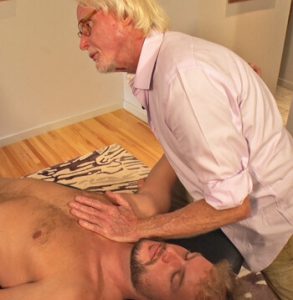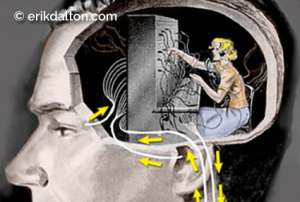 The art of history taking possibly is possibly the least appreciated of all therapeutic interventions. A client’s history is never taken but continually updated and expounded upon throughout each therapy session. Effective history taking develops rapport, while extracting key pieces of pain puzzle information.
The art of history taking possibly is possibly the least appreciated of all therapeutic interventions. A client’s history is never taken but continually updated and expounded upon throughout each therapy session. Effective history taking develops rapport, while extracting key pieces of pain puzzle information.
During a traditional relaxation massage session, silence is golden. However, in pain management settings, history-gathering via subtle ongoing conversations frequently produces sudden intuitive insights that might prove instrumental in their recovery. Caring therapeutic touch not only forms a bond of trust, but often triggers important suppressed memories. It’s amazing how much key information people tend to forget or are unable to verbalize until you get your hands on them. The more they feel the therapist is emotionally committed to helping solve their ailments, the greater the chances unconsciously blocked information concerning a past injury or stressful incident might resurface.
The therapeutic use of anchors saves time by empowering the therapist with a reference point so clients can be mentally guided back to certain events, injuries, accidents or stressful situations that might have precipitated the pain. We have all experienced the frustration of searching unsuccessfully for that key event that triggers a chronic pain episode when the client suddenly belts out, “I completely forgot about that snow boarding accident my neck began hurting a couple days after that kid knocked me down,” or “You don’t think it had anything to do with the new mattress and pillow, do you?” or “Mom thinks I fake my migraine headaches so I don’t have to go to school, but they didn’t start until I got braces.” Once the therapist establishes reference points, they can be used as anchors during subsequent sessions to secure new insights on the type and cause of the client’s injury or illness.
The key to performing good intakes and evaluations is to listen, listen, listen. Enter each session with open eyes, an open mind, and most of all – an open heart. The goal is in refining and combining intuitive skills with a well-rounded therapeutic background. Touch therapists, especially those specializing in pain management, should begin each session with the open-minded wonderment of a child waiting excitedly to see what the body has to teach you that day. Let the energy systems do the talking and the hands do the walking.
 Body-Listening
Body-Listening
Body listening is an art form that, when perfected, clearly guides our therapeutic intent. Entering a session with preconceived therapeutic goals often leads the therapist down a blind path. We often forget it’s the client who knows what is going on in his or her own body, rather than some expert voicing opinions and making decisions on what he or she perceives to be the problem. Because therapist and client interact in many conscious and unconscious ways during a session, body listening through skillful touch provides the anchor that promotes healthy mutual communication.
Development of clear intent and keen palpation skills provides the keys for unlocking the door to the art of body listening. Therapists’ hands palpate for many different things. Where one therapist might focus on a client’s aberrant postural patterns, another might be palpating for tissue texture abnormalities or altered respiratory rhythms. Practitioners of myoskeletal bodywork add another dimension by imagining the shifting skeletal architecture as specific deep-tissue techniques are applied. Regardless of a practitioner’s personal preference, to truly tune in physically and emotionally, personal communication must be in a form understandable to the client. If the client communicates best from a kinesthetic (tactile) space, the therapist must learn to elevate his or her body-listening skills to better communicate with the special needs of these touch-sensitive clients. Slowing down and working with the client’s ventilatory (breathing) processes helps form an unconscious bond that delights kinesthetically attuned clients.
For this type body-listening therapy to be successful, an open and honest dialogue must be established early to prevent development of a transference or counter-transference situation. The more knowledge we gather and share from observing our client’s bodies, the more educated they become about their own bodies, which promotes self-reliance. Always erring on the side of modesty allows the client to feel safe in the caring atmosphere of your office.
Therapists specializing in pain management require adequate session time to filter the results of the client’s history, palpatory findings, and all other pertinent tests through a physiologic lens formed via the scientific scope of basic science and clinical experience. Recently, there has been a noticeable upsurge of fine therapists entering the pain management field, and for obvious reasons. People feel personally rewarded when helping others in need. But, entering this discipline requires the transition be accompanied by advanced study in palpation skills, nervous system assessment, history taking, biomechanics, and pathology. Therapists must resist the temptation to mentally “box” the client’s complaint into a fix-it formula that excludes the body as the primary healer. Fortunately, the human body is not a machine. It possesses the ability to heal with a bit of help from friendly hands.
Note: Video covers details of the home study program. The eCourse contains no DVDs or hard copy manuals. All videos, lessons and downloadable manual are available for instant access online.
On sale this week only!
Save 25% off the "Dalton Technique Treasures" eCourse
The “Dalton Technique Treasures” eLearning course is a compilation of some of Erik’s favorite Myoskeletal Alignment Techniques (MAT). Learn MAT techniques to assess and address specific sports injuries, structural misalignment, nervous system overload, and overuse conditions. ON SALE UNTIL April 29th! Get Lifetime Access: As in all our eLearning courses, you get easy access to the course online and there is no expiry date.







